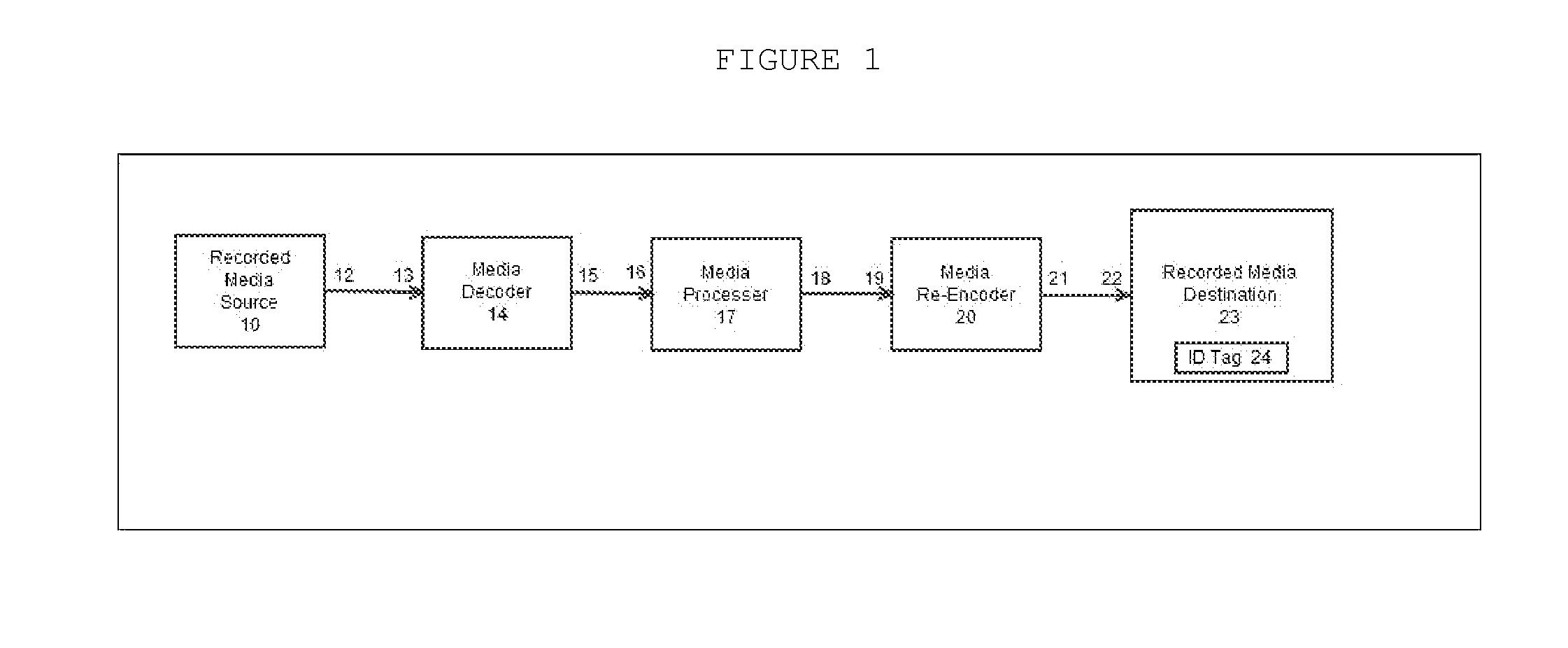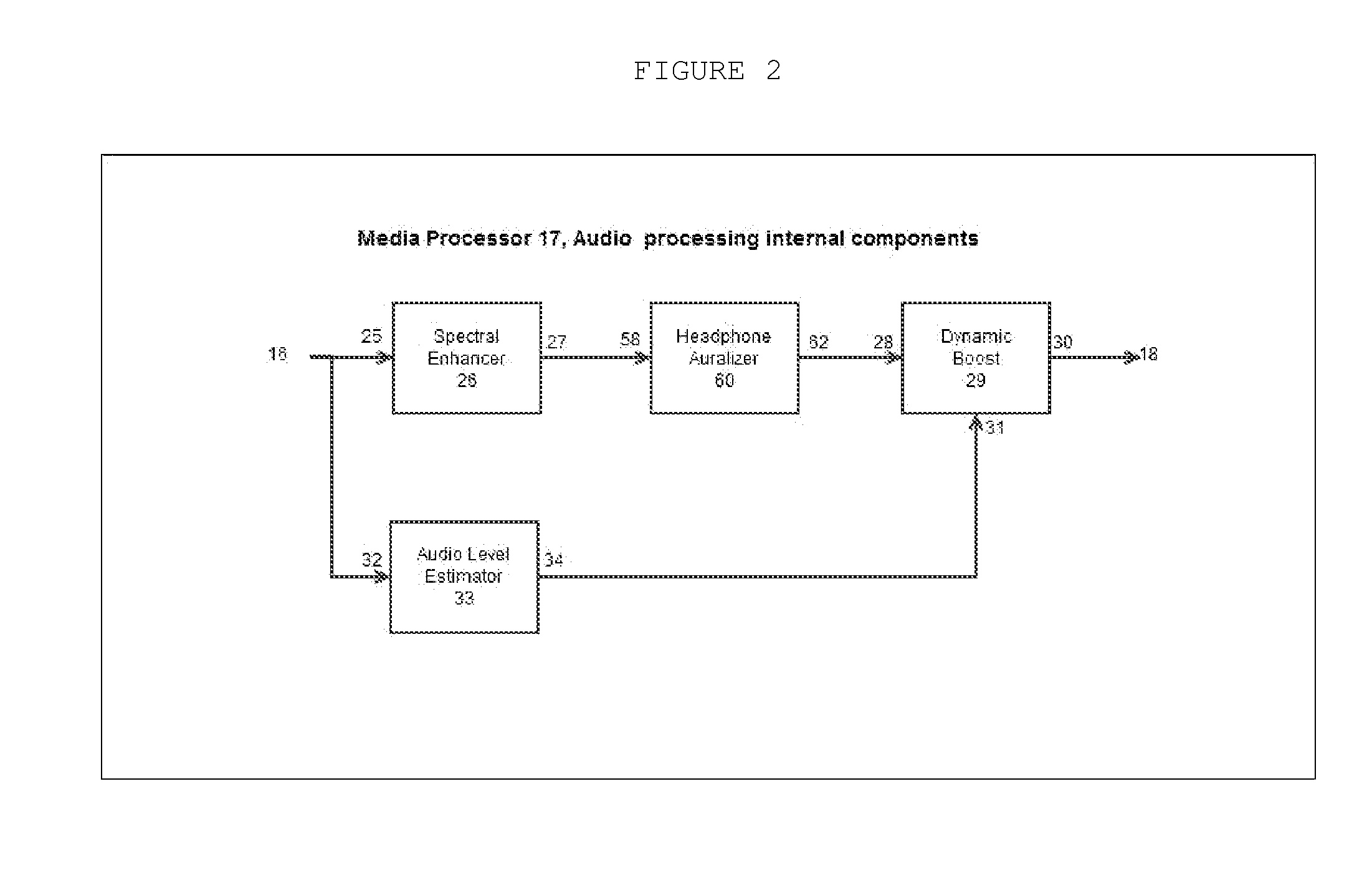Current systems for recording and encoding audio and video performances and activities all have limitations that reduce the perceived quality of the recordings upon decoding and playback.
As with any encoding system there is always some error introduced in the encoding process so that the encoded version is not a fully exact representation of the original sounds that created the recorded electrical signals.
However this reduction in size causes a well known and understood significant reduction in audio fidelity and accuracy.
In both the cases of audio and video, these compression methods cause the encoded audio and video files to have loss of accuracy and detail compared to the original audio and video content.
It is clear that with these described audio, video and combined audio /
video media recording, storage and playback systems that many stages of encoding, decoding and re-encoding are performed on both the audio and video components of the media files, and because of the well understood errors and limitations of these encoding systems, each of these stages introduce some loss of accuracy and fidelity in the audio and video recordings.
It is well known and understood that all
microphone devices have some inaccuracies and thus do not create an electrical output
signal that is an exact representation of the original audio pressure
waves.
In addition the typical audio playback device also introduces inaccuracies and limitations in the final reconstructed audio sound.
In particular the limited dynamic headroom of audio playback systems causes
distortion and lack of accuracy in the final audio
sound wave, and also limits the
usable audio output level of the system, as attempting to increase the output level past the maximum headroom level causes objectionable audio
distortion.
Additional problems occur with the typical audio playback device when headphone or “ear
bud” (small speakers that fit directly in the user's ears) are used, for example with portable media players such as the popular iPod players from Apple Computer Corp.
In a similar fashion the typical LCD video
display device will have
dynamic range and contrast limitations that cause the displayed video to not correctly represent the original video content and in addition to causing inaccuracies the
display device can make the video content harder to discern and enjoy by the viewer.
An additional problem with the
recording system that has been described is that the perceived audio output level of the final reconstructed audio
sound wave in an audio or combined audio-
video recording can vary highly from song to song.
This causes some videos to appear very bright, legible and colorful while other videos will be too dark and appear too colorless for satisfactory viewing.
Thus in the typical process of recording, storing and reconstructing songs, videos and combined audio-
video media recordings, the
multiple stages of capture, encoding, decoding, re-encoding and final reconstruction with a limited playback system all introduce additional errors and thus cause a loss of fidelity and accuracy in the final reconstructed audio sounds and video displays.
In the case where a data reducing encoding system such as the Mp3 audio encoding format or such as the MPEG-2
video encoding format is used, the introduced errors and associated losses of fidelity and accuracy are even more significant.
In addition the well understood headroom and
frequency response limitations of typical audio playback systems and limited
dynamic range and contrast of video display systems causes distortion and limits the maximum playback levels of the audio recordings and the accuracy and legibility of video recordings.
These described encoding and capture based errors, changes in audio volume and video display characteristics and limitations of the playback and display systems reduce the perceived audio and video playback quality and diminish the quality of the listening and viewing experience for the user.
In the case of attempting to use simple or multi-band audio equalizers to improve the playback of audio using the described recording and playback systems, there are two significant reasons why equalizers are not very effective in improving the audio quality.
The first reason is that equalizers are only capable of boosting or
cutting components that are already present in the
audio signal.
Even the highest quality
microphone will not fully accurately capture all the elements of this complex
sound pressure wave, especially since some of the complex
high frequency harmonics are much lower in level than the lower frequency
harmonics, which makes it difficult for them to be recorded accurately.
In addition during the multiple encoding, decoding, re-encoding and playback processes that have been described, due to the well understood errors of these processes there will be additional details of this complex waveform that will not be correctly represented.
This inaccuracy becomes even larger when a
data reduction based encoding method such as the Mp3 format is used.
Even in the case where no
data reduction method has been used, due to the errors in the multiple encoding, decoding and re-encoding steps that have been described, these upper harmonics can be largely distorted or missing in the reconstructed audio
signal.
In the case of the
violin note, this means that at best, using the
equalizer is only partially effective in raising the level of the diminished harmonics for a particular note.
However since the
gain in this band has been increased to compensate for the prior note, this current note will now sound too loud.
Adjusting an
equalizer to compensate for missing or diminished frequency components in audio
signal is thus of limited usefulness, as an adjustment for passages of music with notes in a certain frequency range can sound worse when the song contains notes in a different frequency range, and in addition the
background noise present in the boosted frequency range will also be boosted.
An additional limitation of using
equalization to attempt to improve the audio recording and playback system that has been described is that by using the
equalizer to boost the
gain in one or more ranges you have now created an audio signal that has higher average
signal level.
This higher level has the objectionable property of making the audio playback system more likely to distort the signal.
This occurs because all audio playback systems have a limited amount of signal headroom before the system can no longer increase the
sound wave level.
Distortion from clipping is highly objectionable, and is a significant
disadvantage to the use of equalizers to attempt to restore audio that has been reduced in quality through the audio recording and playback system that has been described.
However this reduction in overall
gain then reduces the overall maximum output level of the system by that same amount.
This is an additional significant
disadvantage in using this approach.
To the user, the effect of missing musical harmonics due to the limitations of both the described system and the limited effectiveness of
equalization is a significant one.
The music sounds somewhat muffled and slightly dull, especially when in comparison to either the original actual performance or in comparison to a playback system that correctly represents all the audio harmonics.
The problems with this method are well understood, since many songs have both loud and quiet segments, the AVC in operation partially turns down the loud segments and turns up the quiet segments.
This reduces the
dynamic range of the song, which often sounds artificial.
This approach requires the user to manually select and set a playback level for each song, which is both
time consuming and error prone.
In addition, only the playback systems from Apple computer, such as the iPod portable audio player and the iTunes PC audio player can recognize and use this volume parameter, so when the file is used on one of the many mp3 audio playback systems from other manufacturers the volume problem is still present.
A washed out image will typically not have enough variation in the dark parts of the image compared to the bright parts of the image.
Turning the saturation up drastically tends to make the image over-
colored and cartoonish appearing.
There are several limitations to the video controls described above.
A serious limitation of all the controls is that they function independently.
An additional serious limitation of the video controls described above is that the settings are fixed in value and do not compensate in any way for the properties of the video content being displayed.
However if the next video being watched was professionally produced and contains brighter content it will appear too bright on the users display, requiring the user to then turn down the brightness for best display.
This fixed value limitation applies to all the video controls described above, including brightness, saturation and contrast.
An additional limitation of both the audio and video controls described above is that they require independent adjustment.
Another limitation is the ability to easily compare combined video and audio quality.
 Login to View More
Login to View More  Login to View More
Login to View More 


